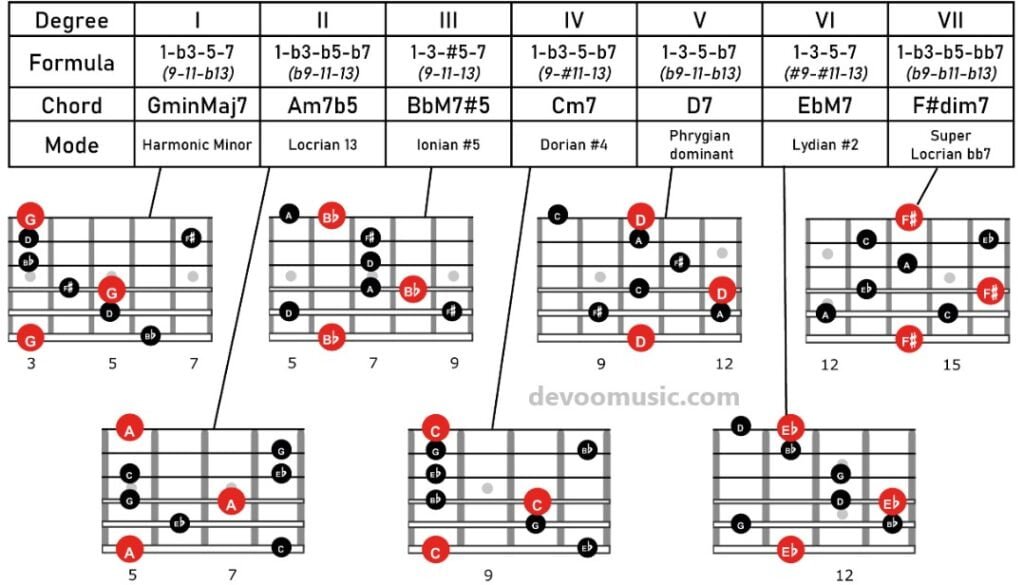Guitar Arpeggios
Arpeggios are the backbone of jazz improvisation, they are simple to learn, they allow to easily outline the harmony and create fluid lines. Arpeggios are very popular in all styles of music (rock, metal, blues, pop), that’s why it is very important to learn them.
This guitar lesson provides the most important arpeggio shapes that any beginner jazz guitarist must know, classified this way :
major 7, minor 7, dominant 7, half-diminished, diminished 7, Major 7#5 and minMaj7.
You’ll find in this tutorial three kinds of guitar diagrams for each arpeggio type :
one-octave shapes (notes within the space of one octave), two-octave shapes (notes within two octaves) and CAGED shapes.
What is a Guitar Arpeggios?
There are two definitions of an arpeggio in guitar. The first meaning (also called Broken chords) is the technique employed to play one by one the notes of an open chord as a fingerpicking player would do.

The second explanation is what interests jazz guitar players. It involves playing the notes of chord to create effective lines and nice improvised solos over a specific chord progression (II V I, turnarounds, backdoor, blues) or a jazz standard.

What Are the Main Types of Arpeggios?
There are different types of arpeggios, they can be minor, major, dominant, diminished, augmented.
What is the Difference Between a Scale and an Arpeggio?
An arpeggio is built from a scale, just as a chord an arpeggio is built by stacking thirds whereas a scale is built with a succession of whole and half-steps.
How Many Notes are There in an Arpeggio?
An arpeggio can be made of three, four, five, six or seven notes.
Why Learning Arpeggios is Important?
Arpeggios are very important tools for improvising over jazz tunes and chord changes. They easily outline the harmony, they help to create more melodic guitar solos. They allow to go straight to the point.
CAGED System
The CAGED system is a learning technique that allows guitar players to understand and visualize chords, scales and arpeggios on the entire guitar neck. The five letters of the word CAGED represent five important chord shapes (C major, A Major, G Major, E major, D major) that serves as the basis for a better knowledge of the guitar neck.
Guitarist Joe Pass used this technique to learn and teach jazz guitar. It is one of the reason why the CAGED method is employed by many guitar teachers and for the guitar charts of this lesson.
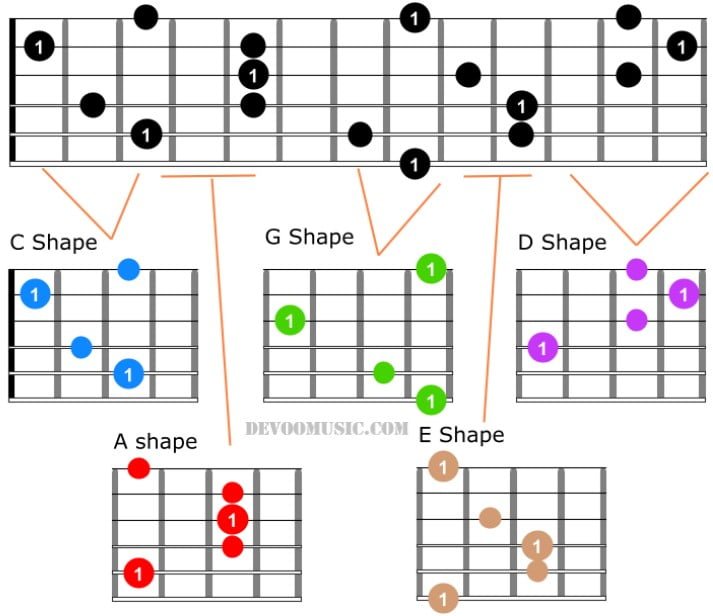
Major 7 Arpeggios
Major 7 arpeggios are built with root/tonic (1), major third (3), perfect fifth (5) and major seventh (7).

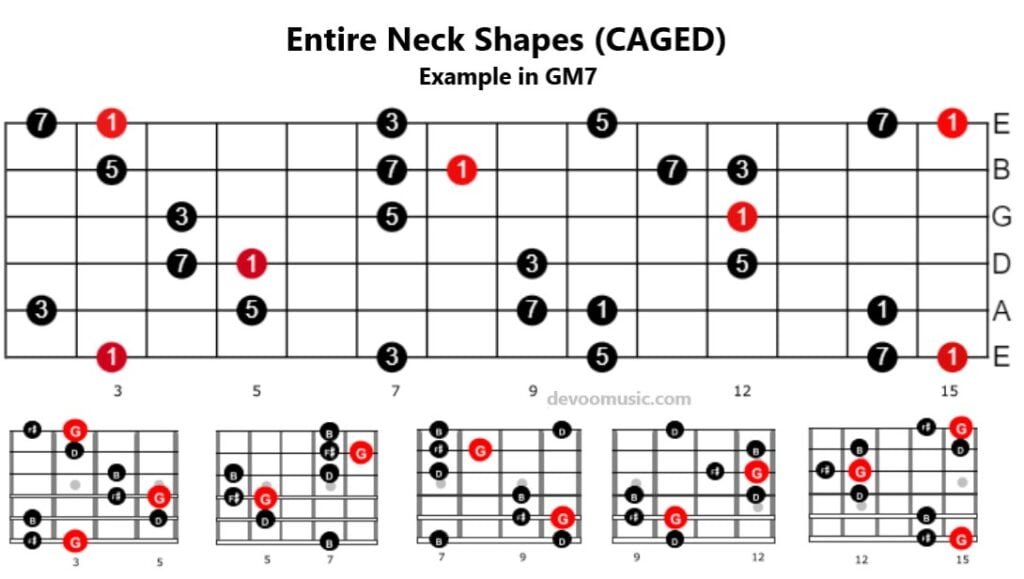
Minor 7 Arpeggios
Min7 arpeggios are built with root/tonic (1), minor third (b3), perfect fifth (5) and minor seventh (b7).


Dominant 7 Arpeggios
Dominant 7 arpeggios are made of root/tonic (1), major third (3), perfect fifth (5) and minor seventh (b7).

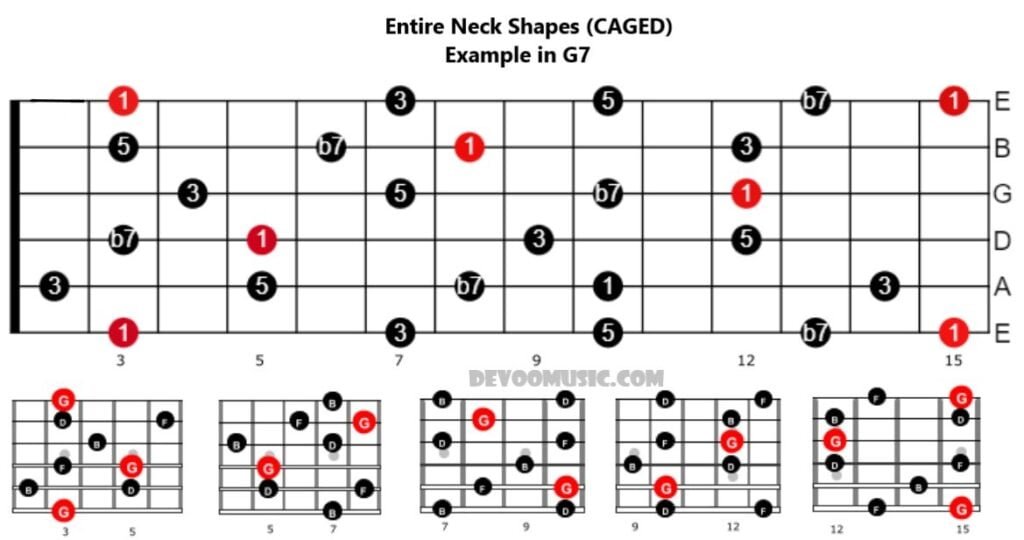
Half-diminished Arpeggios
Half-diminished Arpeggios (m7b5) are built with root/tonic (1), minor third (b3), diminished fifth (b5) and minor seventh (b7).

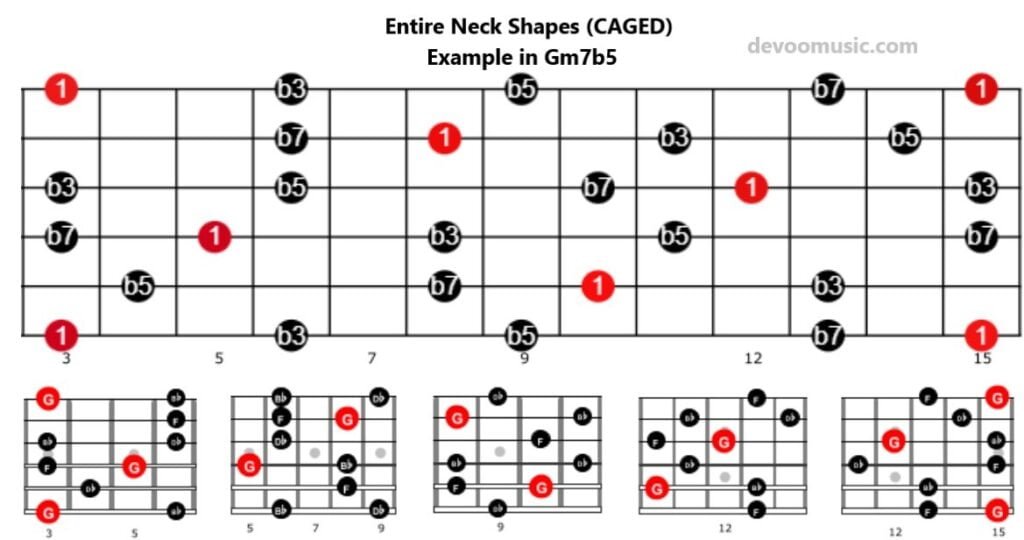
Diminished 7 Arpeggios
Diminished Arpeggios are made of root/tonic (1), minor third (b3), diminished fifth (b5) and diminished seventh (bb7).

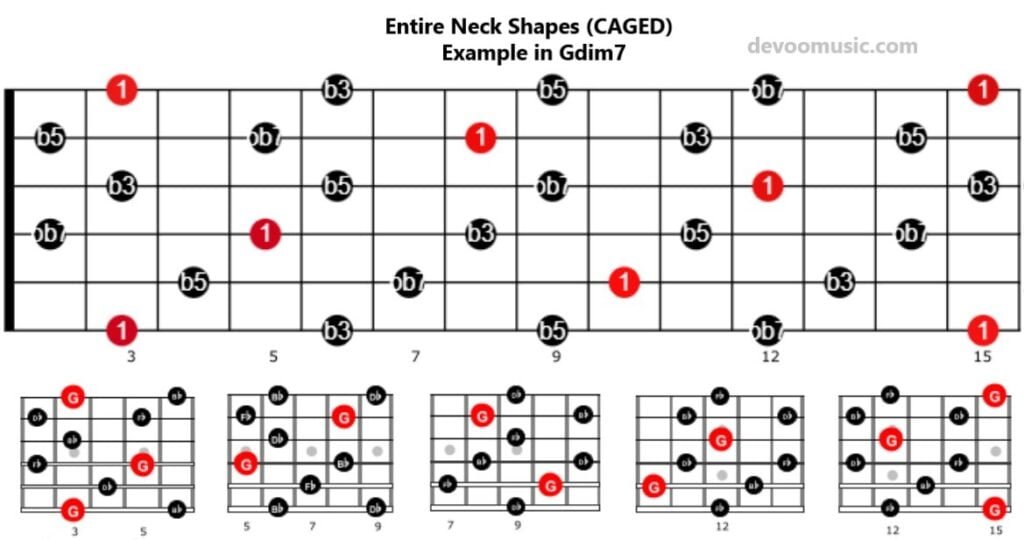
Major 7#5 Arpeggios (Gmaj7#5)
Major 7#5 Arpeggios are constructed with root/tonic (1), major third (3), augmented fifth (#5) and major seventh (7).


Minor Major 7 Arpeggios (GminMaj7)
Minor/Major 7 Arpeggios are built with root/tonic (1), minor third (b3), fifth (5) and seventh (7).


Arpeggios of The Major Scale
When stacking third on each note of the major scale we get seven arpeggios.
Example with G major (G-A-B-C-D-E-F#)
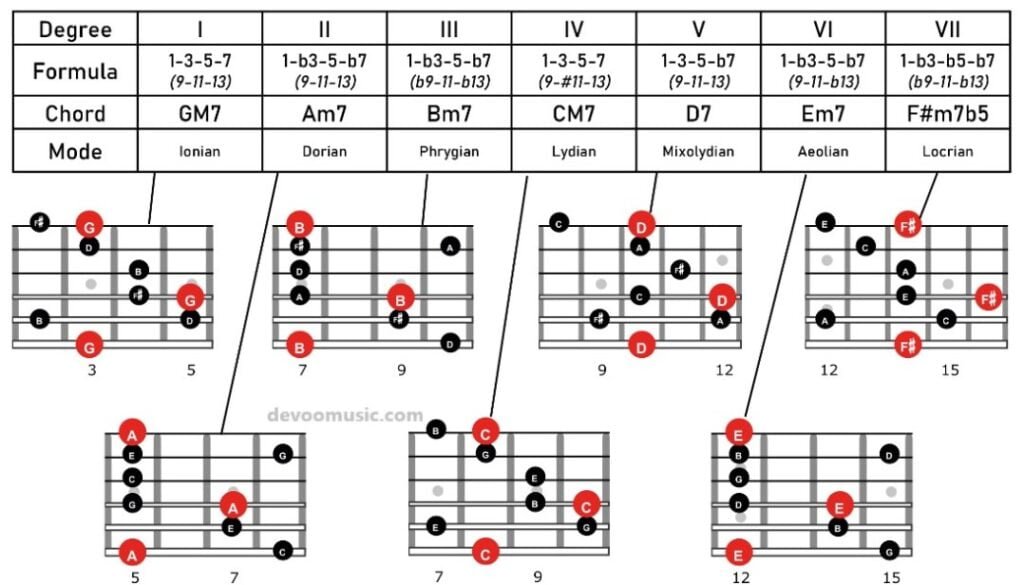
Arpeggios of The Melodic Minor Sc
When stacking third on each note of the melodic minor scale we get seven arpeggios.
Example with G melodic minor (G-A-Bb-C-D-E-F#)
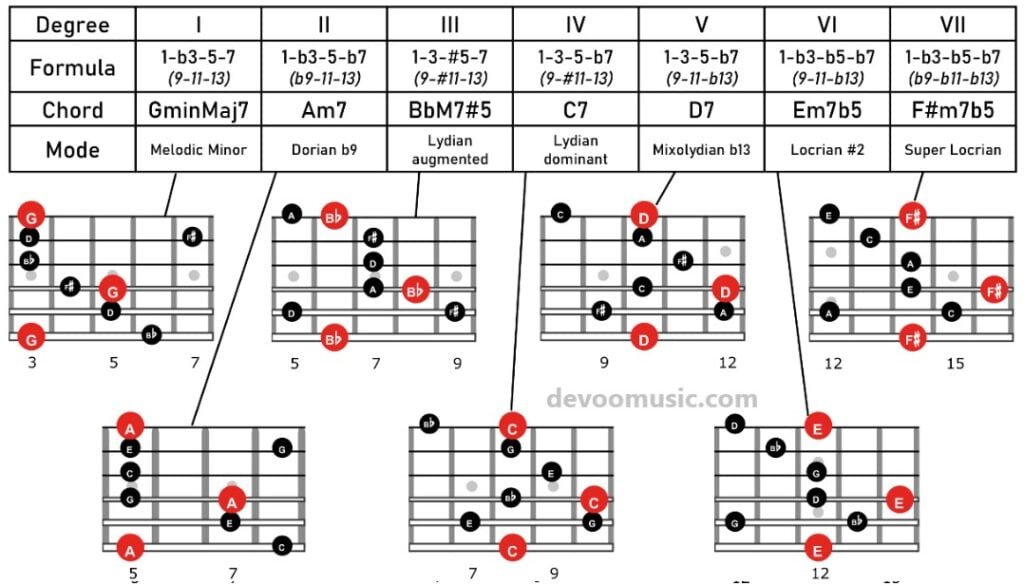
Arpeggios of The Harmonic Minor Scale
When stacking third on each note of the melodic minor scale we get seven arpeggios.
Example with G harmonic minor (G-A-Bb-C-D-Eb-F#)
